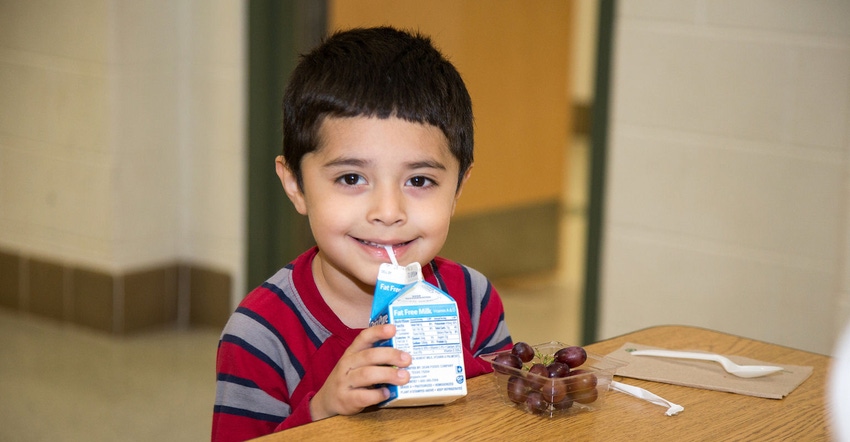Lactose-free milk pilot drives consumption
Checkoff program in Cincinnati schools improved options for more students.
April 29, 2024

A checkoff-led pilot in Cincinnati schools that offered lactose-free chocolate milk increased consumption and reached students who weren’t drinking milk because of real or perceived lactose intolerance.
National Dairy Council (NDC) and American Dairy Association Mideast worked with Cincinnati Public Schools (CPS) to offer the country’s first single-serve lactose-free chocolate milk package to six elementary and four high schools in the fourth quarter of 2023. Because of the program’s success, it was expanded to include all 15 CPS high schools through June of this year.
Key findings of the pilot were that when students have the option to choose lactose-free milk, both milk selection and meal participation increase overall. When compared to the rest of the Cincinnati district, the pilot schools experienced a 16-percent increase in milk consumption and 7-percent higher meal participation.
Tracy Enslen, vice president of business development for American Dairy Association Mideast, said the pilot proved how meeting unmet demand with innovative offerings can drive consumption.
“Students wanted to drink milk but the milk being offered was not what they could consume, so meeting unmet demand was the spark,” Enslen said. “Many of the students just walked by the milk every day and had to pick up water or juice as their beverage option.
“This program is offering every student, regardless of their demographic or socioeconomic status, the opportunity to have milk, and we’re filling the gap where they now can get the 13 essential nutrients they need as they grow.”
Lisa Hatch, vice president of business development for NDC’s school channel, said while milk consumption increased, milk waste appears to have decreased during the pilot.
“We’re hearing from school foodservice staff and from kids who weren’t taking milk previously that not only are they choosing milk, but more of them are also finishing the container, so waste appears to have gone down,” Hatch said. “We historically have seen high school kids leave the milk category at higher rates than younger students, but this pilot is bringing many back.”
NDC and CPS will present the findings of this pilot during a School Nutrition Association (SNA) webinar in June. SNA is a professional organization representing nearly 50,000 members who provide high-quality, low-cost meals to students in U.S. schools.
Enslen’s hope is that the program’s success catches on elsewhere across the country with schools and processors. She pointed to the success of lactose-free dairy at the national retail level where volume is up 11.4 percent through April 14 compared to the same period of 2023.
“In a perfect world, my hope is that every fluid milk processor understands the opportunity to drive more milk consumption in schools with a lactose-free option, the same product they’re already offering at retail,” Enslen said. “I’d like to see more variety offered in schools, so students won’t have to think twice about consuming milk.”
To learn more about the dairy checkoff, visit www.usdairy.com.
You May Also Like


.png?width=300&auto=webp&quality=80&disable=upscale)
